

3 Reads Strategy for Successful Problem Solving in Math
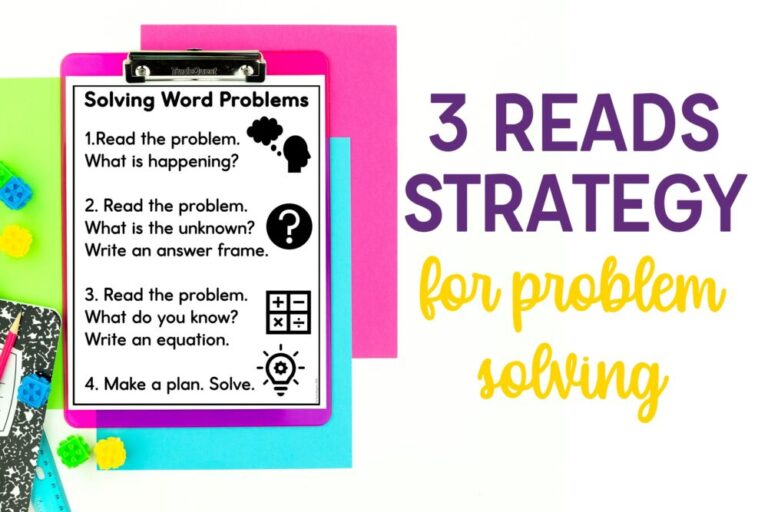
Word Problems are often the hardest part of our math instruction. They can visually overwhelm students. They often contain extraneous information or multiple steps for completion. Students often struggle to persevere through complex problems. But, ultimately, it is through these complex problems that we are able to truly see our students’ understanding of math concepts and proficiency with the standards. Our students are expected to persevere through solving them, to demonstrate understanding, and to use a variety of strategies. I detail my experience with difficulties with story problems in my post Why Your Students Struggle with Word Problems . I use a modified 3 Reads Strategy in my classroom to help students make sense of complex word problems during our Word Problem of the Day . I connect it to the Close Reading we do during E/LA.
We have to read the problem closely to truly understand what is being asked of us as mathematicians.
The 3 Reads Strategy is a series of steps that helps students make sense of word problems. It’s focused on understanding the context. There are a variety of interpretations of the protocol. I have found my students have been increasingly successful following the 3 Read protocol daily. We do it during our Word Problem of the Day routine so we practice nearly every single day. At the beginning of the year, I walk my students through the 3 reads and we talk about the steps with each read. As the weeks go on, my scaffolding decreases as I expect students to apply the same steps independently. I often, especially with more complex word problems, do the first reading orally to provide access for all students. Here are the steps we take during our 3 Reads Routine.
3 Reads Strategy for Word Problems
1st read: read for gist.
The purpose of the first read is to get the gist of the word problem. Students should be able to answer what the problem is about; the context . Students should be able to retell, in their own words, what is happening in the word problem.
2nd Read: Read for the Unknown
The second read is focused on the unknown ; what is being solved for. Identifying the unknown helps students identify important and necessary information for solving during the third read. This helps them parse extraneous information out. It also helps students ensure they’re solving for what is actually being asked. I have my students underline important information in the question and also write a sentence frame for the solution.
3rd Read: Read for Quantities
In this read, students identify the quantities and relevant units. During this read, I have students circle the numbers and underline the key words (most often the units) for solving. It’s important to note that I do not mean keywords that are typically words relating to operations such as more. In this read, we focus on what is known ; the information given. With the unknown already being identified. Students then write an equation or expression to solve. They may also draw a picture if it’s helpful understanding the steps needed for solving.
Make a Plan
The last step in the 3 read protocol is to make a plan for solving. Now that students have identified what is being asked, the information that’s given to them, and what they are solving for, the last step is to actually solve. That may include modeling the problem with base ten blocks. It may also include using the standard algorithm to solve. Whatever strategy students feel they need, they do.
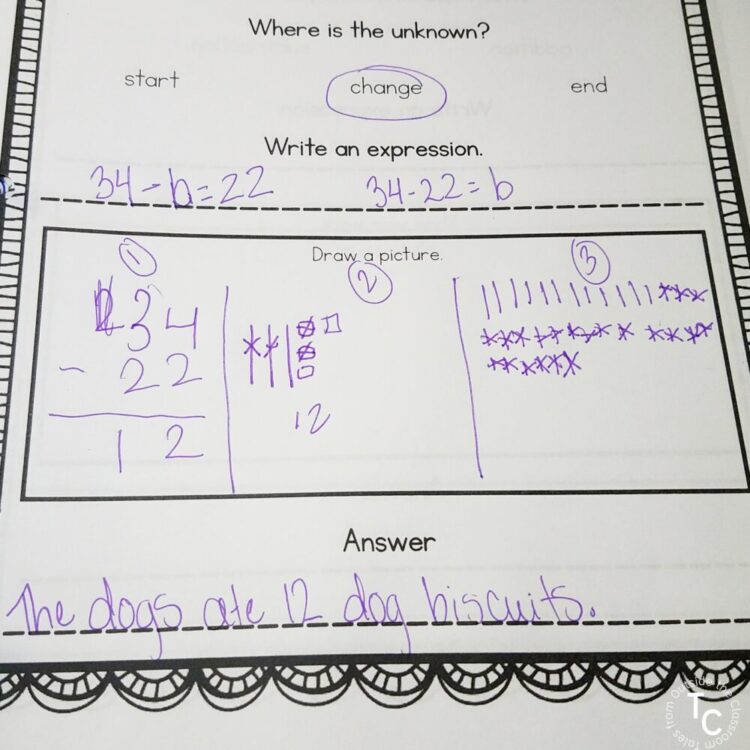
After students have worked through the problem, we share solutions and strategies. The focus is on so much more than a correct solution! I have students show their work and explain their thinking. Through our conversation we may critique someone else’s work to identify their mistake. We may share a variety of strategies for solving the equation. We may compare equations or expressions that were written for the problem. Because I’m walking around while students are working independently, I’m able to give on the spot support to some kids, while also identifying things I want to highlight for the group. This routine, and our steps after, go through so many of the Standards for Mathematical Practice!
It’s great to have a 3 Reads anchor chart or poster for student reference. A co-created anchor chart constructed with students while solving a complex problem would be great! I also have free black & white 3 Read Strategy posters that are perfect for printing on colored Astrobrights paper and made into a bulletin board. There’s also a 1-page 3 Reads Math Routine Poster that’s designed for student use.
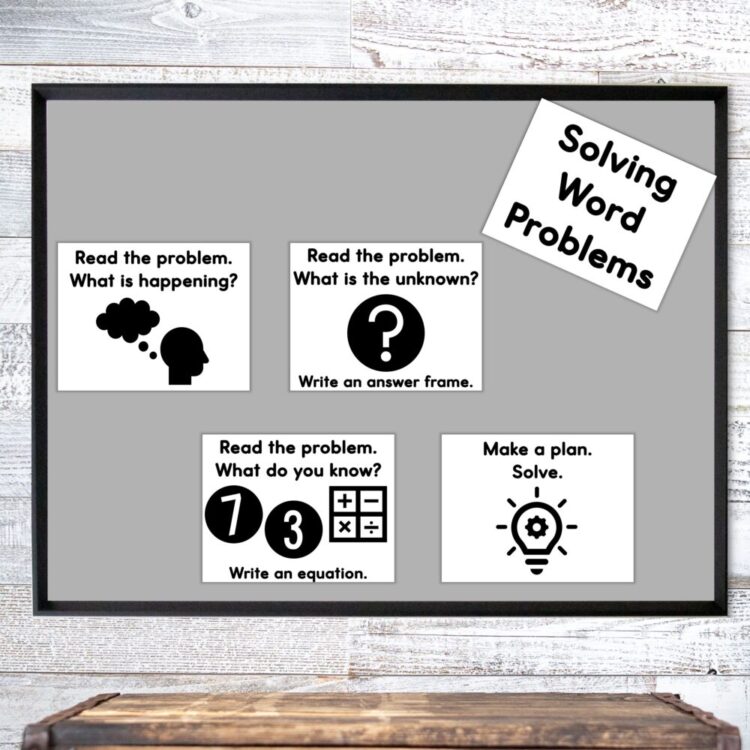
Download the 3 Reads Routine posters here .
After students work to solve, we go over the problem. I scaffold the routine at the beginning of the year so we do each piece together. But as the weeks go on, I expect my students to become more and more independent in using the 3 Reads strategy. If they aren’t doing it independently when we’re working together, they’re not going to be using it independently in their work. Much of the power of our work comes from the discourse around the problem AND how students solved it. Depending on the problem, there can be value in focusing on the context and unknown. For others, the computation and strategies for solving may be the focus. I vary what our math discourse looks like. Some days, students talk with a partner as they work. Others, they talk with a partner after. Many times, it’s a whole class discussion.
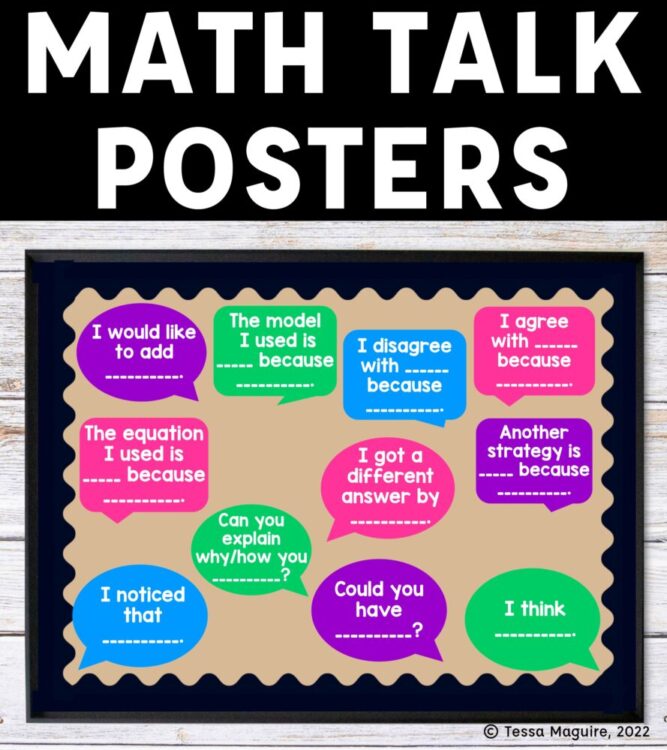
These Math Talk posters help remind students of how they can engage in the classroom discourse around our word problem. They’re the perfect supplement to the 3 Reads Strategy because they refer back to the steps students followed based on the context of the problem. You can get My Math Talk posters for free in your inbox by filling out the form below.
Sign up to receive your free Math Talk Sentence Stem posters! After confirming your email, you’ll receive the file and be signed up for my weekly newsletter.
Loading…
You have successfully joined our subscriber list.
We use our 3 Reads Strategy during our Word Problem of the Day routine. You can read more about it in the blog post linked below. If you want to take a closer look at my Word Problem of the Day Bundles for 1st, 2nd, and 3rd grades, I have them in my TpT store. Each bundle includes a free Back to School version that gives you a great look at the format of the problems.
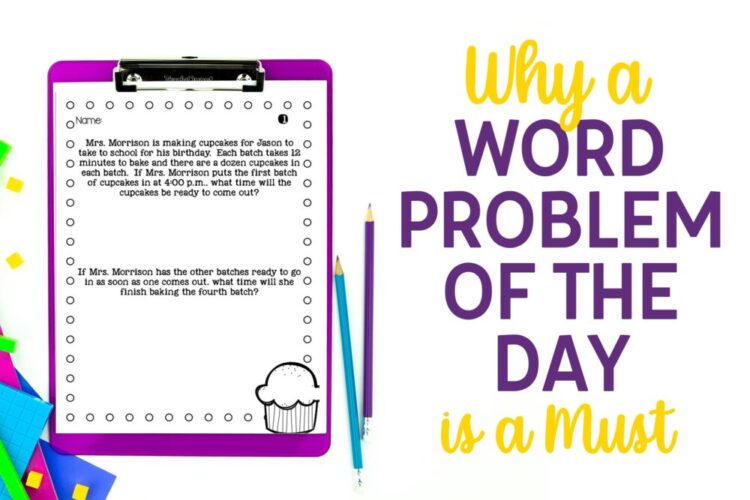
Newsletter Sign Up
Signup for my weekly-ish newsletter. I send out exclusive freebies, tips and strategies for your classroom, and more!
Please Read!
You have successfully joined our subscriber list. Please look in your e-mail and spam folder for Tales from Outside the Classroom. Often, the confirmation email gets overlooked and you're night signed up until you confirm!
I am one of the teachers that are teaching Word Problems wrong! I’ve read through all you said and it makes sense. Will use your strategy as our term starts tomorrow and this term the focus is on Word problems. Thanks for sharing. Do appreciate it.
I hope it helps you and your kiddos!
Leave a Reply Cancel reply
Your email address will not be published. Required fields are marked *
Save my name, email, and website in this browser for the next time I comment.
This site uses Akismet to reduce spam. Learn how your comment data is processed .
LOOKING TO SUPPLEMENT?
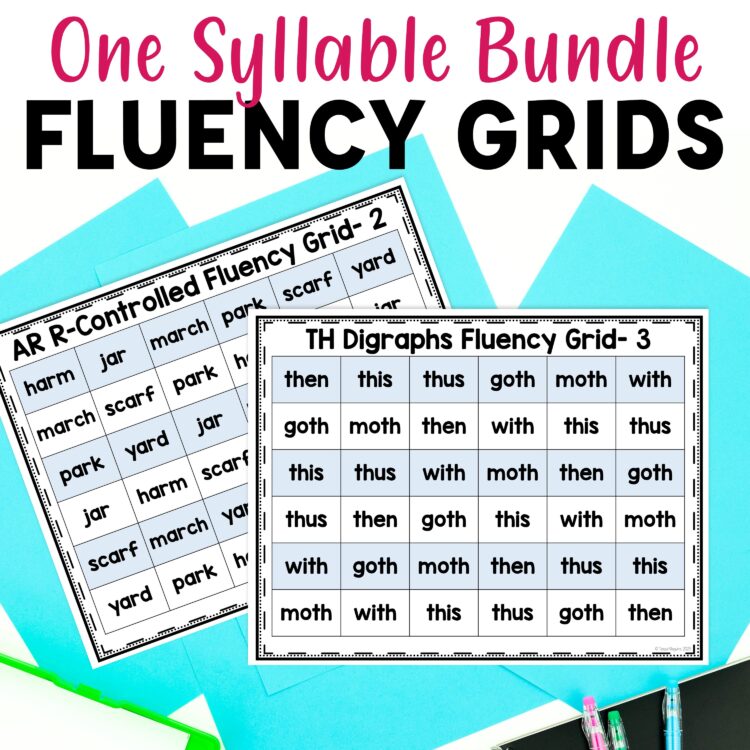
▹ NEWSLETTER ◃
Hi! I’m Tessa!
I’ve spent the last 15 years teaching in 1st, 2nd, and 3rd grades, and working beside elementary classrooms as an instructional coach and resource support. I’m passionate about math , literacy , and finding ways to make teachers’ days easier . I share from my experiences both in and out of the elementary classroom. Read more About Me .
© 2024 Tales from Outside the Classroom ● All Rights Reserved

Let's keep in touch! Sign up for my newsletter!
You will receive a confirmation email shortly. After confirming, you will be officially subscribed.
- Kindergarten
- Math Fluency Centers
- EBook Store
- Math Clip Art
- Math Read Alouds
- On-Site Math Consulting
- Institutes and Events
Math Anchor Charts
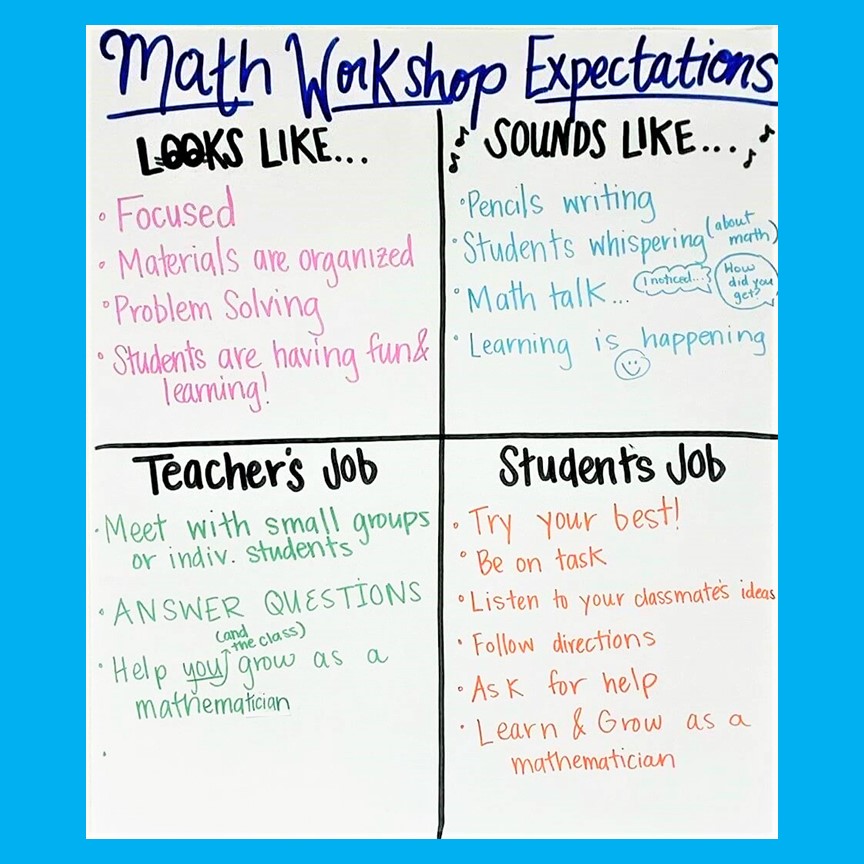
Math anchor charts can be used to support independence and facilitate student self-regulation. Three types of math anchor charts are commonly seen in classrooms: procedural, process, and strategy.
Procedural anchor charts help reinforce the teaching of classroom routines and procedures. Examples of procedural anchor charts include how to pack away math center materials at the end of a session, how to log on to an online math game using the classroom laptops, or procedures for how to turn in homework.
Process anchor charts remind students of how to work through a process. These often focus on new math content or concepts such as how to solve a division problem using an area model or how to multiply a fraction by a whole number.
Strategy anchor charts support students in developing strategic behaviors. For example, a strategy chart for a multiplication unit may include multiple strategies to solve a multiplication problem or focus in on one particular strategy.
Student-sized copies of process and strategy anchor charts can be used to scaffold learning. These can be stored in a math tool kit or pasted into student notebooks so that they are readily accessible at all times. These should also be shared with interventionists who work with students so that consistent vocabulary, strategies and models are used school-wide.
Both process and strategy anchor charts can provide a source of visual reference to support student thinking, reasoning and problem solving. A good math anchor chart:
- has a single focus
- reflects recent math lessons needing support and scaffolding
- helps students remember the process of a skill or strategy
- supports the development of precise math language
- is organized and accurate
- is temporary in nature
After a chart has been introduced it should be positioned where students can make use of it and revisited several times over the next few days to remind students to refer to it as needed. Having charts positioned where students can easily see them will increase the likelihood of them being used. Having too many charts up at one time may be overwhelming for students. Math anchor charts should always reflect the current unit of study and be removed once students are secure with the content.
Take a moment to reflect on the math anchor charts in your classroom:
- Are your students using them?
- Which ones have been up for too long?
- Which ones could you remove without your students even noticing?
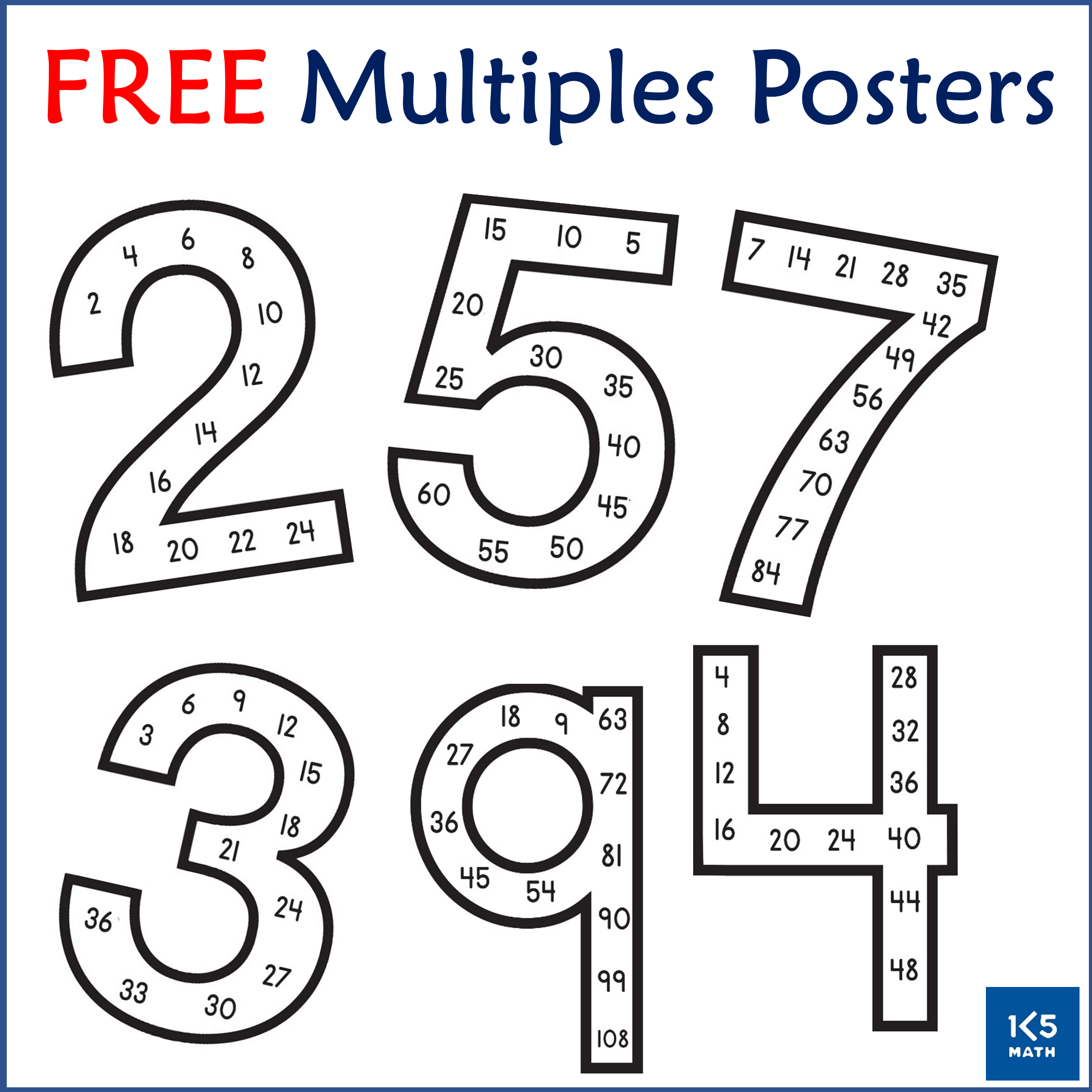
Home I Sitemap I Privacy Polic y I Contact I Terms of Use I Careers
© 2010 - 2024 K-5 Math Teaching Resources LLC

Differentiated Teaching
A Beginner’s Guide to Incredible Anchor Charts
If you've spent any time on Pinterest, you've likely been inundated with images of stunning classroom anchor charts. If you're like me, you've probably scrolled through the eye-candy wondering how anyone has time to make these charts look so pretty and still cook dinner for their kids, grade papers, write lessons, do the laundry… you get my drift.
For many new teachers, the pressure to have a Pinterest-worthy classroom can feel overwhelming with all the other things being thrown your way. If this is you, don't stress! Many first-year teachers walk into the classroom eager to take on the new challenge, but without much understanding of how best to get the most bang for their buck out of instructional tools, like anchor charts.
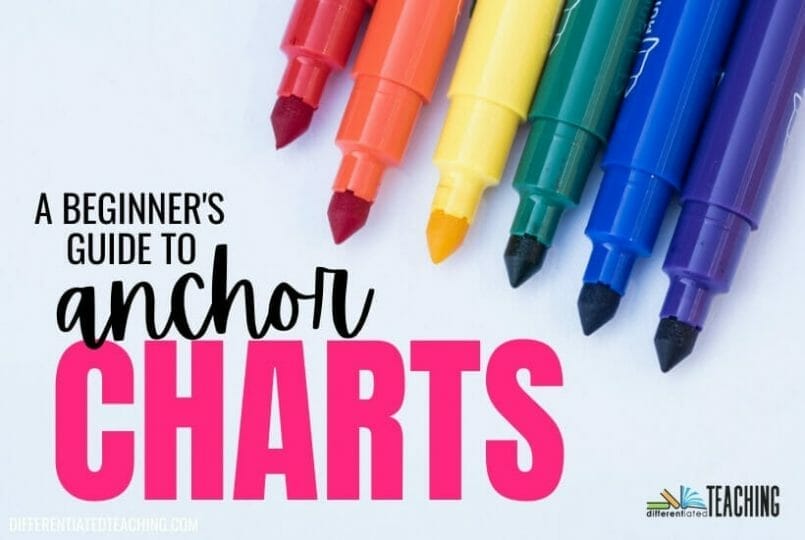
Today I wanted to share a little background information on what anchor charts are and how best to use them to support learning in your classroom. Whether you're a brand new teacher or a returning veteran, I hope you'll find some helpful tips and new information as you read.
This post may contain affiliate links.

What is an anchor chart?
An anchor chart is a teaching tool that helps visually capture important information from the lesson. They are created, at least in part, during instruction to help emphasize and reiterate important information, procedures, processes, or skills being taught.
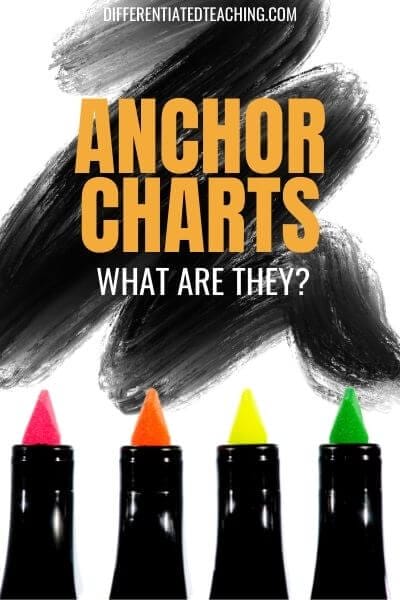
For example, if you're teaching students a problem-solving strategy to help them approach multi-step word problems, your chart might include the steps in the process so that students can refer to this as they work through problems.
Some anchor charts are interactive, meaning that students help to fill them in as a part of the lesson by writing directly on the chart or using post-it notes. This can be a great tool for formatively assessing student understanding during instruction.
You can use anchor charts for any subject, and they are commonly seeing in reading , writing, and math classrooms. After the lesson, the chart should remain visible for students to refer to during independent practice and across future lessons.
Why are anchor charts valuable tools in the classroom?
Using anchor charts is a fantastic way to get students actively engaged in lessons. You can use these charts to teach vocabulary, explain concepts, illustrate examples, and make the learning process fun and visually engaging for students.
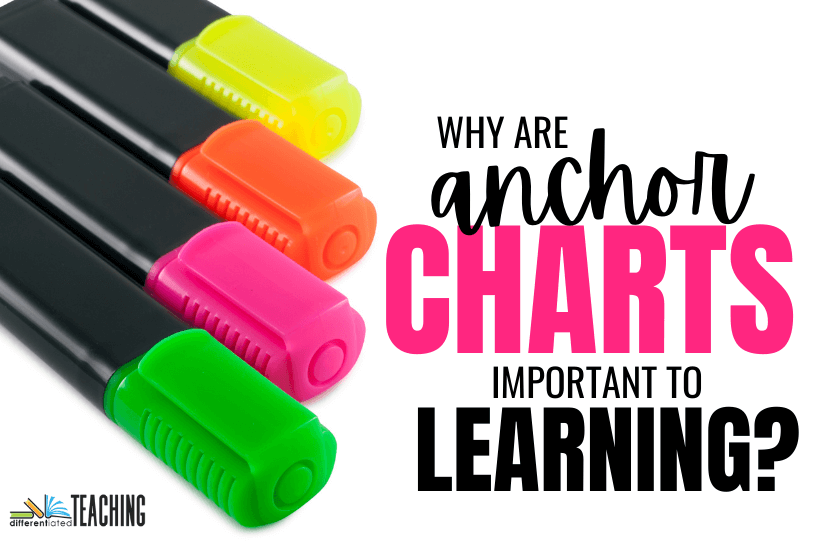
Anchor charts serve as a great scaffolded support in the classroom offering a visual reference that you and your students can look back at as you work through guided and independent practice.
While charts are great for all learners, they are especially helpful for several groups of at-risk learners. They offer students who struggle with attention a visual of the steps to guide them through a process. They can also offer English Language Learners a reference for vocabulary and key academic language .
You can also use charts to help students retain key information and make connections between prior knowledge and new information. Research shows this is a key to helping students build a stronger understanding of new material.
How To Make An Anchor Chart With Your Students
As you're preparing to make a chart for your class, you'll want to have a plan for what information you want to include and how you anticipate it being laid out prior to teaching the lesson.
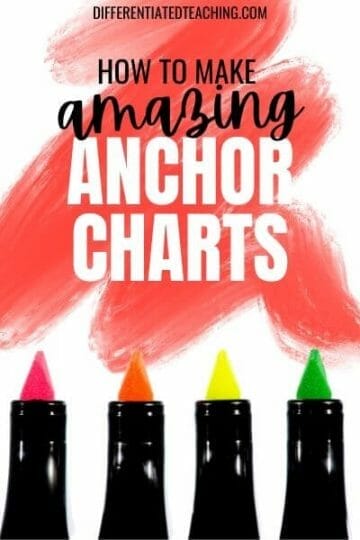
Since your students should be involved in the actual creation process (whether in a hands-on or verbal participation format), you don't want to fully create the chart in advance.
However, that doesn't mean you want to start class with a blank slate!
You can prep certain parts of your anchor chart – like headers, graphics, or questions you plan to have students respond to – in advance. This can allow you to focus on the instructional pieces more fully during the lesson instead of trying to get everything on the page while your students watch you write.
Here's what you'll need:
The great thing is that you don't need a ton of supplies to make some really amazing anchor charts for your classroom. There are really only four things you'll need:
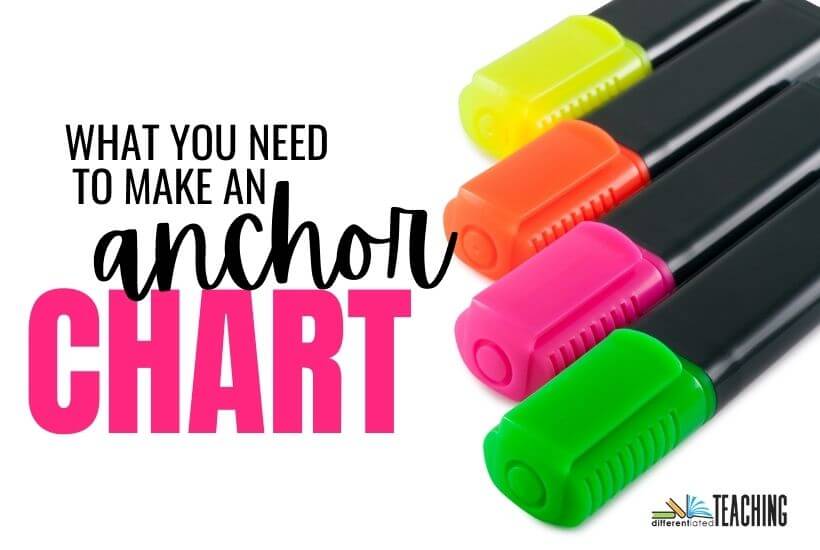
- Large chart paper – I love the Post-It Easel Tablets (affiliate link) because I can peel & stick.
- Markers – I prefer the wide Crayola markers & the Mr. Sketch markers (affiliate link)
- Projector (optional) – great for pulling up images to trace vs. trying to freehand graphics
During your mini-lesson, you can either record student responses or allow students to record their ideas on sticky notes to add to the anchor chart. You can also have students record answers directly onto the chart if you're feeling really brave.
Okay, but how do you make an anchor chart pretty?
When you're new to making anchor charts, the prospect of wanting everything perfect can be a bit overwhelming. First off, no one is expecting Pinterest-level perfection like some of the examples you'll see below. This is especially true with interactive anchor charts, which are meant to be completed by the learners.

Here are a few simple tips to help keep things neat and organized while making your charts:
- Use your projector. Special fonts, graphics, etc can be displayed directly onto your chart paper as you prep your chart. Use a pencil to lightly trace the design to get you started.
- Start with a pencil. For charts that will be 100% teacher-written, create a light roadmap of where all the information will go. You can then write over this with a marker during the lesson as you complete each portion with your learners.
- Stick with simple. Trying to put too much information on a chart can create a huge mess. Focus on just the most important details and write big enough that the student furthest away from the chart can still refer to the information.
- Use Post-It notes for student responses. While you can have students write on the chart, you can use the same chart multiple years if you have students respond with sticky notes.
That being said, if your anchor chart doesn't quite turn out how you hope it would during your lesson, you can always re-write it at a different time to make it pretty or more organized. However, I'd save your time and only do this if it is an anchor chart you plan to use consistently across time because your plate is already WAY too full.
How do you hang an anchor chart in the classroom?
This can be an issue depending on the types of walls you have in your classroom. Cinder block walls tend to be especially tricky. More than once I've come back to my room after a long weekend to find all my posters and anchor charts have fallen while the air conditioner was turned off.
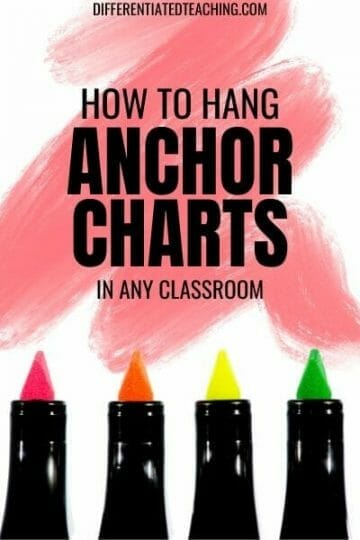
That being said there are several ways to display anchor charts that can help maximize their use. First, try to select an area that you'll consistently use across time for each subject. That will help students develop a habit of referring to that area when they are seeking support or need to double-check for the information from the lesson.
Here are a few options for hanging your anchor charts:
Use a curtain rod. A thin curtain rod with two metal hooks can be a great way to display anchor charts. Add new charts to the ring across time for easy reference.
Try hooks. Command hooks and magnetic hooks can both be great options depending on your walls and board space. If you're in a portable classroom, magnetic hooks can keep things really neat and easy to move when necessary.
Poster Frames can be a great choice, too. If you like things to look a little neater, cheap poster frames can be a great alternative. Just be sure to get the right size so they fit your chart paper correctly.
Use a pants hanger. You can easily clip the poster inside the pants hanger. Then hook it to the top of a whiteboard, on a cupboard, or on a nail. Most stores would be happy to give you one for free if you tell them you're a teacher.
Use hot glue to help with cinder block walls. Hot glue clothes pins or hooks to your cinderblock walls. You can easily remove these later, but they won't fall down like tape or the putty.
Dedicate bulletin board space by creating a focus board. Create a subject-based focus board that includes vocabulary, standards being covered, etc. Leave space to display your anchor charts after you create them. This creates a one-stop-shop for students when they need to reference something for more information.
The 4 Most Popular Types of Anchor Charts
While there are lots of different kinds of anchor charts out there, as Pinterest can plainly show us. Most anchor charts you'll create for your classroom fall into one of four main categories. These four types are interactive charts, vocabulary charts, strategy charts, and procedures charts.
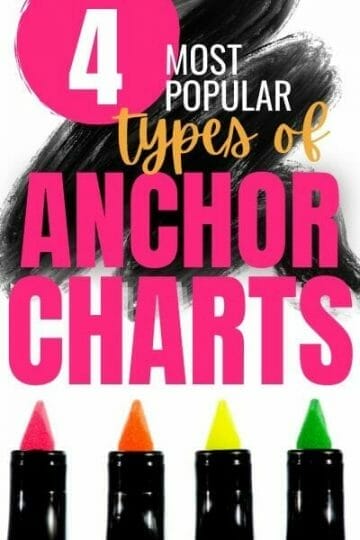
Here's a little more information about each type.
1. Interactive Anchor Charts
Interactive anchor charts are designed to be completed as a part of the lesson process. They are a way of students showing their learning. These anchor charts are commonly designed in a way that they could be used multiple times within a unit.
For example, when teaching a skill like main idea and supporting details, the anchor chart might include the graphic organizer where students can add a main idea and supporting details using post-it notes from a reading the class did together.
Interactive anchor charts can be a great tool for formative assessment .
2. Vocabulary Anchor Charts
This type of chart focuses on content area vocabulary. It commonly includes visual examples, definitions, and details that can help the students apply the term to their learning and in academic conversation.
Here's a great example:
3. Strategy Charts
This type of chart is common in classrooms. They provide the steps and strategies students can refer to when working through assigned tasks. Designed as a way to scaffold instruction, strategy anchor charts lay out the step-by-step process the student should go through to implement the material taught in the lesson.
This often includes worked examples done as guided practice and graphic organizers, acronyms, or other tools that students were taught to use during the mini-lesson time.
4. Classroom Procedure Charts
These charts remind students of the expectations in the classroom. This can include the routines and procedures of the classroom . It might also include how student work is expected to be structured or completed prior to being turned in.
Sometimes teachers create anchor charts to show expectations for notetaking or adding headings to assignments. The goal of these charts is to make it easier for students to organize their assignments and materials in a way that helps them successfully accomplish the classroom tasks.
The Positives & Negatives of Visual Supports
While the idea of creating a chart in front of your learners may make you shiver, anchor charts offer a number of important benefits for student learning.
Not only do they offer a visual that helps keep students engaged during the lesson, but they also provide help to facilitate self-directed learning. Instead of being reliant on the teacher to answer every question that arises, students can refer back to the anchor chart to clarify and reassure them that they are on the right track.

However, it is important to remember that there can be too much of a good thing. It is important to prioritize what information you're putting onto a specific chart, but it is also important to prioritize how many charts are on display at any given time.
Too many visuals in the classroom can be a major disruption to learning. This means that instead of helping your struggling learners by providing visual cues on how to complete the task at hand, you might actually end up making the task more difficult because they're being overwhelmed by too much visual stimuli.
Therefore, it's important to find a balance. As a new teacher, you may feel pressure to make an anchor chart for everything. Take time to assess whether this is something that your students will use again and again. If not, feel free to let that pressure go!

Problem Solving Strategies Anchor Chart & Lesson Plan
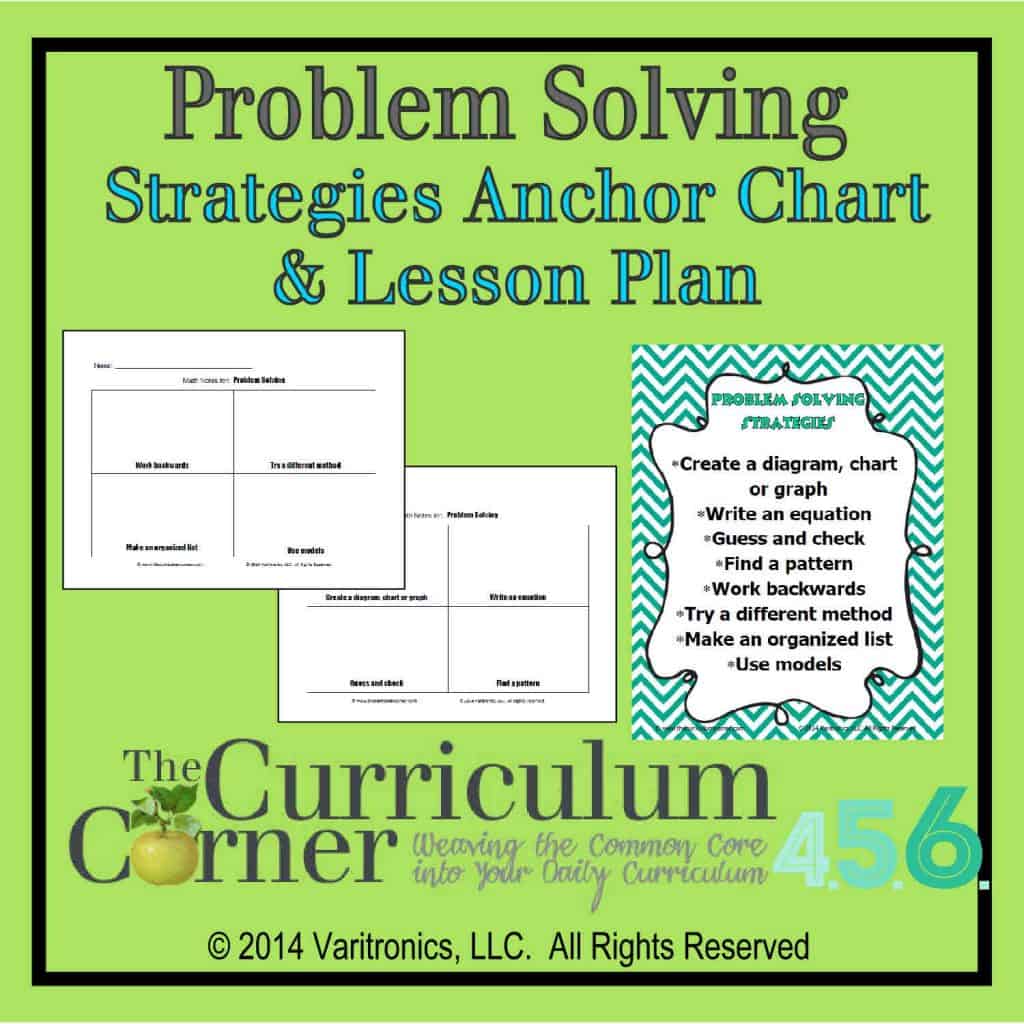
We are very excited to announce a new partnership with VariQuest Visual Learning Tools! Hopefully VariQuest is the company responsible for producing your school’s poster maker. Besides the classroom tools available for you to purchase, VariQuest also has a very helpful blog which you can find here: VariQuest’s Blog . Their blog is full of great tips for teachers, headlines in education and now… resources designed by The Curriculum Corner just for VariQuest. So that all of our followers will be able to find these resources easily, we will be sharing these resources on our site as well. For each resource shared by VariQuest, we will be creating a preview of the materials on our site along with a short summary. We will include the link to the resources on their blog so that it will be easy for you to download the materials. All of the resources we create for them will include the CCSS addressed. Of course, if you are an administrator who is looking for an amazing poster maker, let us know and we will be sure to help you connect with someone at VariQuest!
Strategy: Making & Using a Table - The Curriculum Corner 4-5-6
Wednesday 29th of January 2020
[…] Problem Solving Strategies & Anchor Chart […]

IMAGES
VIDEO
COMMENTS
Math Problem Solving Strategies Anchor Charts Anchor charts cover the following: • Problem Solving Strategies • Types of Math Problems • Math Talk Sentence Stems • Math Key Words • CUBES • STAR • UPS-Check • Choose, Act, Reflect • RICE • WIK, WINK, & WIMP
A co-created anchor chart constructed with students while solving a complex problem would be great! I also have free black & white 3 Read Strategy posters that are perfect for printing on colored Astrobrights paper and made into a bulletin board. There’s also a 1-page 3 Reads Math Routine Poster that’s designed for student use.
In addition to creating anchor charts together, students can glue the templates into their interactive notebooks and take notes during lessons. These templates are also great to turn into booklets and use as quick reference guides all year long. They make great companions for Math Skill of the Day Weekly Journals in 3rd, 4th, or 5th grades.
These often focus on new math content or concepts such as how to solve a division problem using an area model or how to multiply a fraction by a whole number. Strategy anchor charts support students in developing strategic behaviors. For example, a strategy chart for a multiplication unit may include multiple strategies to solve a ...
Yo, I’ll Solve It Math Anchor Chart. This anchor chart idea for teaching first graders how to solve addition problems comes from Rindy Roberts, who goes by @learningwithheart on Instagram. Based on the Vanilla Ice song Ice, Ice Baby, she jokes that it makes her feel very old when her firsties don’t know the song, but it gave us a great idea ...
Use a pencil to lightly trace the design to get you started. Start with a pencil. For charts that will be 100% teacher-written, create a light roadmap of where all the information will go. You can then write over this with a marker during the lesson as you complete each portion with your learners. Stick with simple.
This Problem-Solving Anchor Chart provides 8 helpful strategies students can implement when trying to solve a math word problem. Strategies for students include drawing a picture, guess and check, write an equation, make a model, work backwards, solve with simpler numbers, look for a pattern, and make a table.
Problem Solving Strategies Anchor Chart & Lesson Plan. This lesson includes an anchor chart with frequently used problems solving strategies. Also included is a graphic organizer used for note taking. As you practice each problem solving strategy in your classroom, have students take notes and add this page to their math notebooks.
Elapsed Time T-Chart. Telling elapsed time on a T-chart is similar to using a number line, but instead of ‘hopping’ to show the increments of time being passed, those time units are recorded in the column on the right. Begin by writing down the start and end time, then slowly add increments of time in minutes/hours to the original time.
Struggling to get your students to solve two-step word problems? Have no fear, our anchor chart is here! We walk your students through the CUBE Problem Solving Strategy and RDW Engage New York Curriculum Strategy. Both of these strategies demonstrate to students the exact steps to problem solve in d...